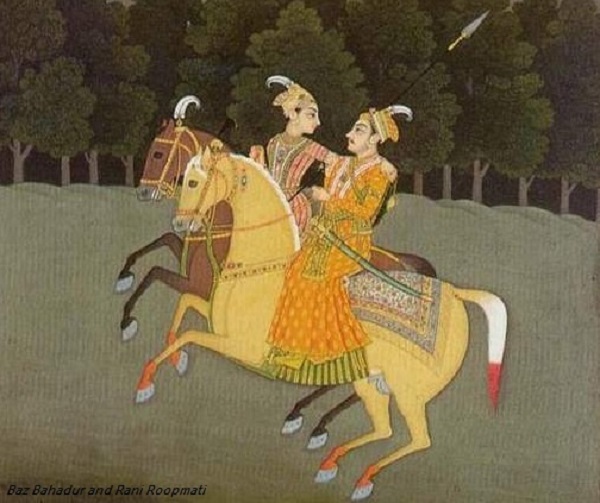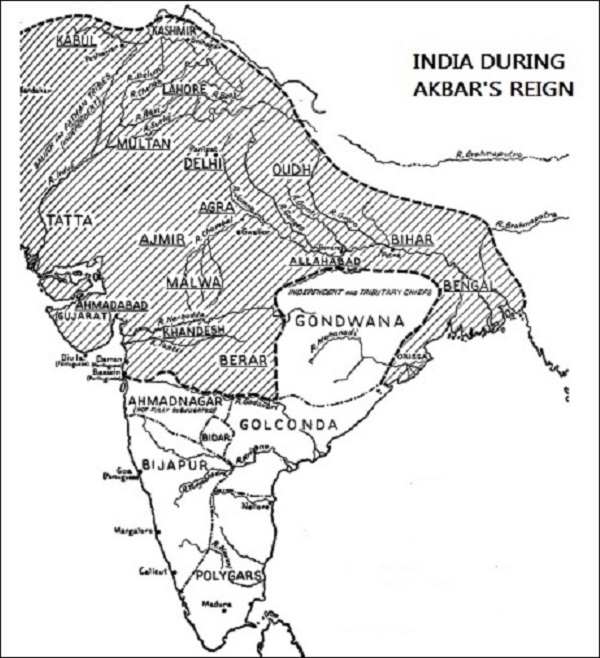
- Medieval Indian History - Home
- Kingdoms of North India
- The Rajputs
- The Invaders
- Delhi Sultanate
- The Khilji Sultans
- Tughlaq Sultans
- Lodi Sultans
- New Kingdoms
- Religion
- The Sikh Movement
- Babur’s Advent into India
- Major Battles
- Significance of Babur's Conquest
- Humayun’s Conquest
- Humayun’s Downfall
- Sur Empire
- Akbar the Great
- Early Phase of Akbar’s Reign
- Expansion of Mughal Empire
- Akbar’s Administrative System
- Akbar’s Organization of Government
- Akbar’s Relation with Neighbours
- Rebels during Mughal Empire
- Deccan & South India
- Conquest of South – I
- Conquest of South – II
- Deccan’s Cultural Contribution
- Political Development Mughals
- Nur Jahan
- Shah Jahan’s Rebel
- Mughals’ Foreign Policy
- Mansabdari System
- Social Life under the Mughals
- Nobles & Zamindars
- Trade & Commerce
- Mughals’ Cultural Developments
- Language, Literature & Music
- Religious Ideas & Beliefs
- Problems of Succession
- Aurangzeb’s Reign & Religious Policy
- North-East India
- Popular Revolts & Movements
- Rise of Maratha
- Administrative System of Shivaji
- Aurangzeb & Deccani States
- Reference and Disclaimer
Expansion of Mughal Empire
Kingdom of Malwa
During Akbars initial period, Malwa was being ruled by a young prince, Baz Bahadur. Baz Bahadurs accomplishments were a mastery of music and poetry. Besides, the romantic story of Baz Bahadur and Rani Rupmati is also very famous. Rani Rupmati is known in history because of her beauty.

Because of Baz Bahadurs interest in music and poetry, Mandu (Baz Bahadurs capital) had become a celebrated center for music. The army, however, had been neglected by Baz Bahadur.
In March 1561, the expedition against Malwa was led by Adham Khan, son of Akbar's foster-mother, Maham Anaga. Baz Bahadur was badly defeated (in the battle of Sarangpur) and the Mughals took valuable assets, including Rupmati. However, she refused to go with Adham Khan and preferred to commit suicide.
After defeating Malwa, Adham Khan ruled with cruelties, because of this, there was a reaction against the Mughals, which supported Baz Bahadur to recover Malwa.
In 1562, Akbar sent another expedition to Malwa (led by Abdullah Khan). Baz Bahadur defeated again and he had to flee west. He took shelter with the Rana of Mewar.
After wandering about from one area to another, Baz Bahadur, finally approached to Akbar's court and was enrolled as a Mughal mansabdar. Likewise, the extensive territory of Malwa came under Mughal rule.
Kingdom of Garh-Katanga

In 1564, Mughal arms (led by Asaf Khan) overran the kingdom of Garh-Katanga. The kingdom of Garh-Katanga included the Narmada valley and the northern portions of present Madhya Pradesh.
The kingdom of Garh-Katanga consisted of a number of Gond and Rajput principalities.
In 1542, Aman Das (also known as Sangram Shah), ruler of Garh-Katanga married his eldest son Dalpati Shah with Rani Durgawati (daughter of famous Rajput Chandel Emperor Keerat Rai of Mahoba) and strengthened his position.
Dalpati Shah died soon after his marriage and the princess Durgavati became a widow. But she made her minor son king and ruled with great courage.
Princess Durgavati was a good markswoman with both guns and bow & arrow. She fought many successful battles against her neighbors, including Baz Bahadur of Malwa.
Asaf Khan, the Mughal governor of Allahabad moved towards Garh-Katanga with 10,000 cavalries. Some of the semi-independent rulers of Garha-Katanga found it an opportune moment to throw off the Gond supremacy.
The Rani Durgavati was not supported by her nobles rather left with a small force. She fought bravely but defeated. Once finding that she lost the battle and was in danger of being captured, she stabbed herself to death.
Over a period of time, Asaf Khan also became despotic; however, when Akbar had dealt with the rebellion of the Uzbek nobles, he forced Asaf Khan to expel his illegal games.
Akbar restored the kingdom of Garh-Katanga to Chandra Shah, the younger son of Sangram Shah and took ten forts to round off the kingdom of Malwa.
Gujarat Expedition
In 1572, after defeating Rajputs (namely Chittoor, Ranthambhor, Jodhpur, etc.), Akbar advanced towards Ahmadabad via Ajmer; however, Ahmadabad surrendered without a fight.
After Rajasthan expedition, Akbar turned his attention towards the Mirzas who held Broach, Baroda, and Surat (regions of Gujarat).
During the Gujarat expedition, Akbar saw the sea for the first time at Cambay, he rode on it in a boat.
In 1573, when Akbar returned back, after defeating Gujarat, a fresh rebel broke out all over Gujarat. Immediately after hearing the news, Akbar moved out of Agra and traversed across Rajasthan in merely nine days.
On the eleventh day, Akbar reached Ahmadabad. In this journey, which normally took six weeks, only 3,000 soldiers were accompanied with Akbar. But with only 3,000 soldiers, Akbar overcame the 20,000 rebellions.
In 1576, Akbar defeated Daud Khan (the Afghan ruler) in Bihar and executed him on the spot. Likewise, ended the last Afghan kingdom from northern India.